Genre: Sports Developer: FarSight Tech. Publisher: Sega of America Players: 1-4 Released: 1995
What some would consider the greatest quarterback ever retired following the 1994 season. With Joe Montana finished with football and with his game contract, Sega found a new spokesman in then-Super Bowl champion Deion Sanders. The flashy “Prime-Time” headlined the next NFL game in late ’95, along with some improvements to the gameplay. A few tweaks were added to certain areas, and it was an improvement to the slower-paced NFL ‘95.
Prime Time NFL benefited from the hearty meat that was still on the bone of its predecessor. There were exhibition and season modes. You could play the ‘95 season as well as the ‘93 and ‘94 years, the last of a trend that began with NFL Football ‘94. The multiple options, especially in season mode, were reasons to get into Sega’s series rather than the Madden franchise of games. Also, tweaking the rosters really took the cake. It’s easy to forget how big of a deal this and NFL ‘95 was because no one else was going that in-depth with their football games.
The presentation was something of a mixed bag. Outside of menus and a few new portraits of players, there wasn’t any change to the graphics. It was still somewhat mediocre, but they sported some decent animations, especially with touchdown dances and taunts. Regarding the audio, the music was mostly new, and as with other Sega Sports games, it managed to put you in the mood to play a game and make your mark on the field. The sound effects unfortunately remained almost unchanged from the previous year’s entry. The voices were abysmal and muffled with the P.A. announcer, but the taunts were a bit cleaner and clearer.
At your disposal were 30 teams and players, which included the then new Carolina Panthers and Jacksonville Jaguars. Returning from the previous year were Pro Bowl teams, an all-pro team, and teams comprised of players from colleges in certain regions. As with other Sega football games, you could mess with the weather or play indoors, as well as original or revised rosters. This was a game that could allow up to four players at once. There was no coin toss, so whoever kicked off first was random. The kicking system was a huge improvement and was like the T-meter in EA’s NBA games. Here, it gave you power over the kick and how far towards the sideline or middle you wanted the ball to go. The result was much better than that leg animation that couldn’t be controlled half the time in ‘95.
Prime Time’s gameplay moved very quickly, even more so than that of NFL ‘93 and ‘94. It appears that the developers finally figured out how to make a sports game and not just art game (FarSight made the Genesis game Art Alive and Color a Dinosaur on the NES) For the most part, you could be quick on your feet and not have any huge issues. Running the ball was about as realistic as possible for 16-bit football. There was a good selection of moves like speed bursts, a spin, and a dive. It was also possible to taunt and sidestep when you were close to the endzone, utilizing the six-button controller. Another cool feature was the power to break tackles, something that was rarely seen during the ‘90s for video games. This addition was important, as passing was functional but not the smoothest. Moreover, you had the ability to switch to intended receivers and throw lob or bullet passes. Under center, you could fake hut the ball, call audibles, and switch to intended receivers when passing.
Defensive functions included switching between players, taunting, and calling audibles before the snap, along with jumping, diving, and using speed bursts during the play. Either way, you were calling a play on both sides, and hopefully you outsmarted your opponents. The in-game options were pretty much the same from previous versions, and the difficulty mode returned NFL ‘94. Outside of those, it was the same game experience.
The thing that made NFL ‘95 stand out was its in-depth features, and Prime Time thankfully brought those back. They included having many more players on the rosters, especially on offense. You could easily remove any player and put others on your favorite team via free agency. There were still many free agents. even ones that retired before the ‘95 season. The ability to look at teams and player stats also returned, and the player ratings were a bit more in depth and easier to understand. The season mode included more stat categories, like tackles and field goals. Prime Time also let you play as any team, much in the same vein as Tecmo Super Bowl. A final bonus was that you could save your own records just like in NFL ’95, and FarSight added a create-a-player mode a season MVP.
As with the rest of the series, penalties were few and far between. Like in NFL ’95, there were also injuries, but they varied depending on location and severity. My only complaints outside of the graphics included the passing game and the defense. Passing was a little floaty, and at times dropped balls were common. Otherwise, it worked decently. Defensively, the game almost felt like the computer didn’t try. When it attempted things like a shotgun play with a Hail Mary pass, it came off too cheap and was successful far too often.
There are many perks to the last few Sega Sports football games but having to choose between NFL ’95 and Prime Time, I’d go with the latter. Both games are good choices, though. For such a late game in the Genesis’ run, Prime Time presented a quality product that not only did the sport justice but gave fans and gamers a lot of options to explore. Staying ahead of your competition is usually a good thing, and Prime Time had a pretty good lead on its defender.
Score: 7 out of 10

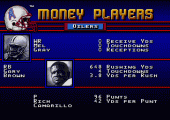
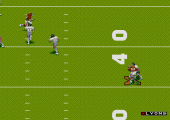
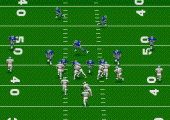
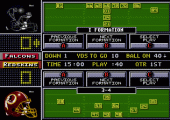
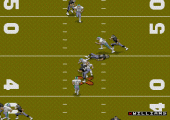
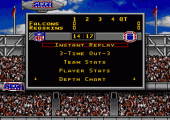
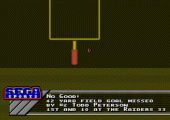
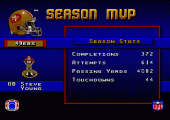
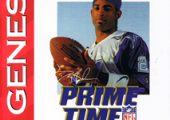
Recent Comments